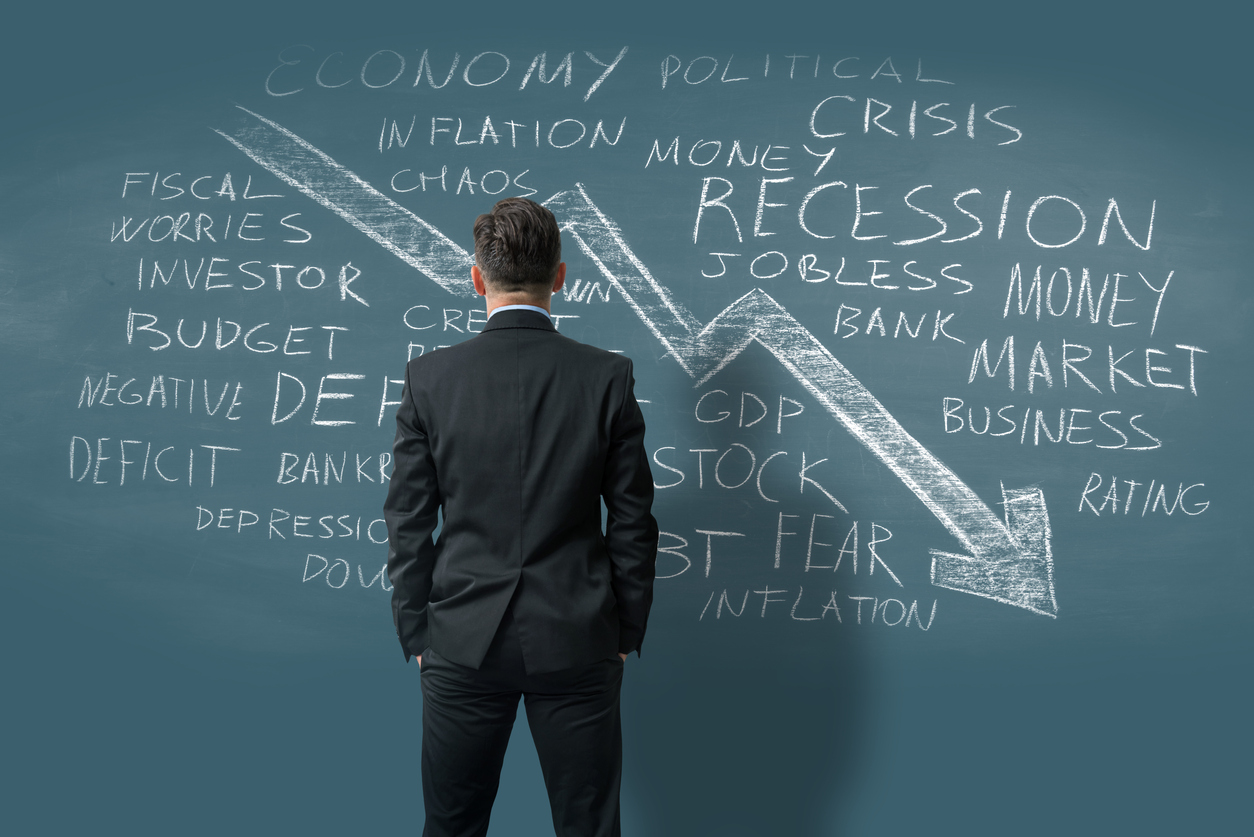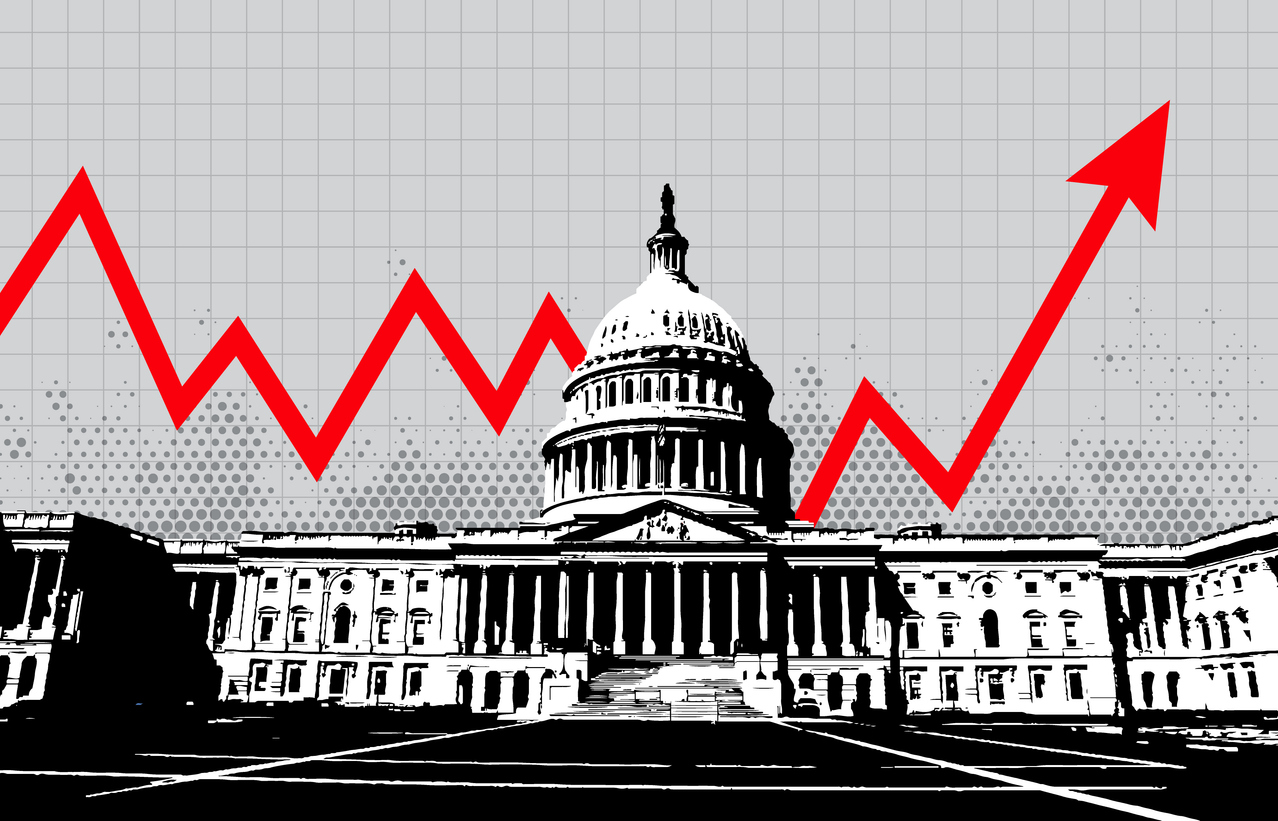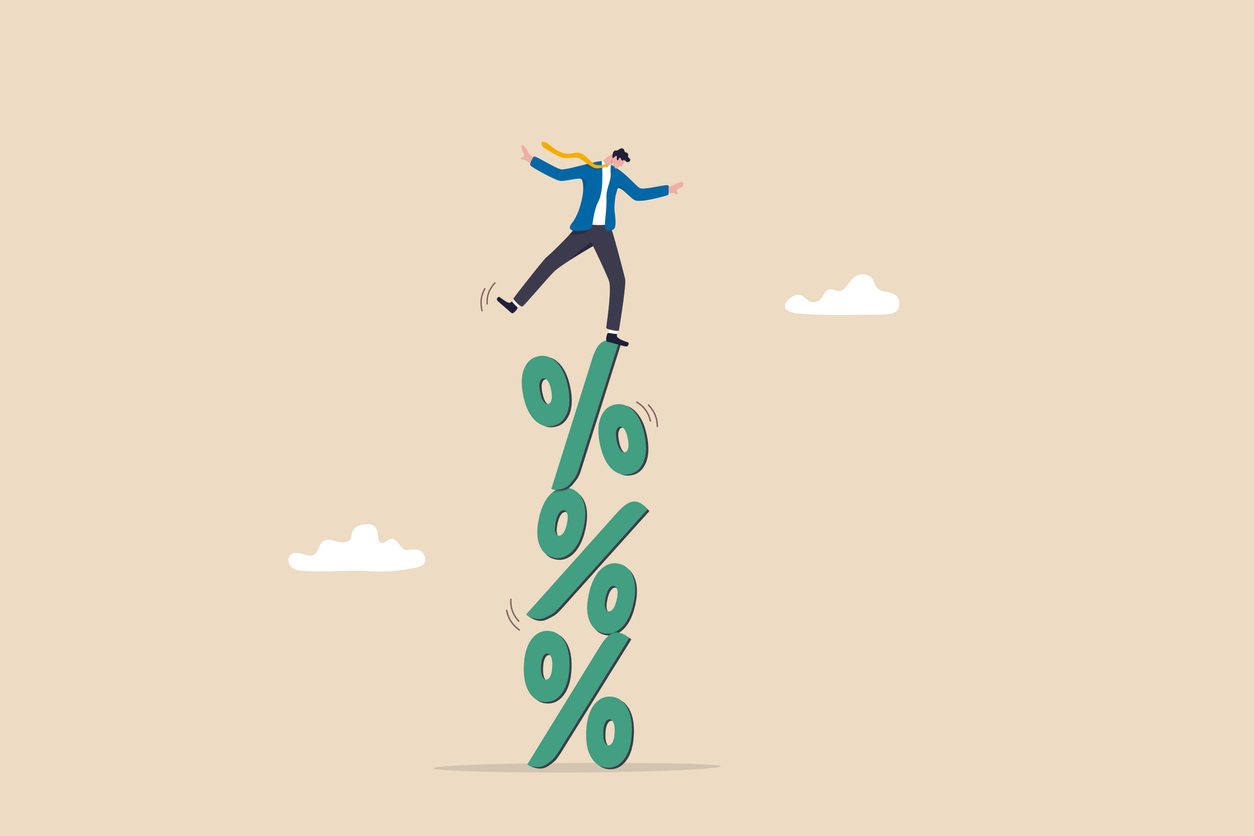
Are We Heading Toward A Recession Right Now?
Are we heading toward a recession? Before we answer that question, let’s first define what a recession is. In economics, a recession is a contraction in the business cycle that occurs when there is a general decline in economic activity. They usually occur when there is a widespread drop in spending, and it typically lasts for more than a few months. Some have long defined a recession as a period in which real Gross Domestic Product (GDP) declines for at least two consecutive quarters– which actually happened during the first two quarters of 2022, though many maintained that the economy still was not in a recession given the strength of the consumer and labor market at that time.
Right now, many Americans are waiting in fearful anticipation as the headlines have suggested for months that a crippling recession was coming. What can we expect in the near term? Does 2024 mean a 2008 do-over? Is another great financial crisis on the horizon? In this article, we’ll look at the indicators pointing to a possible recession and why they are important for investors to consider.
Economic Growth
When it comes to a recession, there are various predictions being made by experts and analysts. Many economists are closely monitoring key indicators to gauge the likelihood of an economic downturn. Some indicators that are being closely watched include the yield curve, unemployment rates, consumer spending and business spending, housing market trends, industrial production, etc. These indicators provide valuable insights into the overall health of the economy and can help investors make informed decisions. While predictions about a recession can vary, staying informed about these indicators can help individuals navigate potential economic challenges and make strategic investment choices.
Identifying an economic downturn involves meticulous scrutiny of macroeconomic forecasts – for example, a decreasing GDP trend often is a quality litmus test that signals a potential recession. Alternatively, attention to industrial production may also provide insightful predictions. A consistent downfall in this sector is indicative of declining business investment, which in turn may forecast an impending recession.
Real GDP Growth
One critical indicator that a recession may be imminent is a significant downturn in Gross Domestic Product (GDP) growth. GDP, the total value of all goods and services a country produces, can shed light on economic health, and a notable decrease traditionally signals an impending economic downturn.
- Decreased consumer spending reducing GDP
- Reduced industrial production lowers GDP
- Lower business investment dwindling GDP
- Contractions in exports impacting GDP negatively
- Economic policy changes leading to slower GDP growth
According to the Bureau of Economic Analysis, real gross domestic product (GDP) increased at an annual rate of 5.2 percent in the third quarter of 2023 against a second-quarter increase of 2.1 percent. The increase in the third quarter primarily reflected increases in consumer spending and inventory investment. However, according to a recent “GDPNow” estimate from the Federal Reserve Bank of Atlanta forecasts GDP growth of just 1.2% in the fourth quarter.
This certainly represents an economic slowdown, but it does not necessarily scream recession. However, other factors are in play.
Employment Indicators
Elevating unemployment rates often presage recession, as a steady rise signals declining business operations and dampened consumer spending. Likewise, economic downturns find their harbinger in job market contractions; diminishing job creation amplifies financial insecurity, thereby suppressing market spending and derailing economic growth.
Unemployment Rate
A swift uptick in the rate of unemployment can signal imminent economic difficulties. This key indicator, when it soars, often heralds the onset of a recession.
- Observe sector-wide job losses which may indicate broader financial instability.
- Investigate surges in short-term unemployment as a potential sign of a faltering economy.
- Check for innovation stagnation which may lead to reduced employment and economic slowdown. Examining shifts in job creation provides a foresight into upcoming recessions. A sudden slowdown, magnified by a steep drop in new job creation, often signals a looming recession. However, sustained job creation plays an instrumental role in recession prevention. A robust job market fuels consumer spending, driving economic growth, and mitigating the risks of a downturn.
According to the Bureau of Labor Statistics, as of October, the current unemployment rate sits just below 4%. Historically speaking, this is low, and in turn, doesn’t necessarily indicate the recession that some economists fear.
Consumer Spending
Consumer spending, a pivotal indicator for economic surveillance, often provides the earliest signals of a recession given that it accounts for approximately 70% of GDP. Drastic fluctuations in this sector, especially a sustained decrease, can serve as a warning of an impending economic downturn. But the data is starting to come in for the holiday shopping period.
Per a report compiled by PwC, almost 40% of consumers will spend more overall than they did last year. Consumers will increase spending by a healthy 7% this year, albeit largely on their credit cards as total credit card debt outstanding in the U.S. is currently $1.08 trillion according to the Federal Reserve Bank of New York, allocating an average of $1,530 for gifts, travel, and entertainment.
Business Sentiment
Business sentiment, gauged through metrics such as Business Confidence and the Purchasing Managers’ Index (PMI), can provide insightful recession indicators. Businesses wading into apprehensive sectors tend to curtail operations, thus plummeting confidence levels and diminishing PMI results. These signs can notably inform investors of an approaching economic downturn.
Business Confidence
As a significant indicator of economic stability, business confidence is closely observed by investors. It depicts the extent to which businesses are willing to take risks, such as investing in new projects or hiring additional staff. Thus, understanding the sentiments of business leaders is crucial for predicting economic trends.
A plummeting business confidence score can suggest recession potential. It signifies the varying degrees of cautious optimism that businesses harness, acting as a mirror to visualize fears and expectations. With this knowledge, businesses and investors can determine the trajectory of the economy and act accordingly.
The changes in business confidence are generally interrelated intricately to the health of the economic environment. Because companies typically curtail spending and halt expansion plans when confidence wanes, any significant drop in business confidence is a red flag signifying a probable economic downturn or recession.
Financial Markets
Identifying signs of a looming recession often involves closely tracking the ebbs and flows of financial markets. Evidence of sudden market shifts, for example, could indicate an impending economic downturn.
These shifts typified by enhanced volatility in financial markets can act as fairly reliable recession predictors. Sudden swings can signify investor uncertainty, which often precedes economic recessions.
Stock Market Performance
Examining stock market trends often gives us clues about an impending economic slowdown. Changes, specifically prolonged downward trends in major indices, may indicate growing investor pessimism.
Bearish market trends, i.e., prolonged periods where investment prices fall, have historically been harbingers of a possible recession. Investors divest their assets, hinting at a drop in economic confidence. Different sectors react uniquely to recessionary pressures. For example, luxury goods and non-essential services often see reduced demand, while essential services and discount retailers might fare better.
Thus, keeping a close eye on significant stock market shifts can provide an early warning of a potential recession. This allows both businesses and investors to make informed choices in times of volatile economic conditions. However, it is also important to remember that the economy and the stock market do not always move in the same direction, and historically the stock market has tended to recover prior to the economy when recessions have occurred.
Bond Yield Spreads
The inverted yield curve holds immense predictive power. When short-term yield exceeds long-term, a recession typically follows, reflecting strained investor confidence and anticipated economic downturn.
Increasing bond yield spreads can act as a barometer for recession. They often expand when investors demand higher yields for perceived risk in lending long-term, signaling economic unease. The current yield curve will probably continue to invert for the time being if there are indications that the Federal Reserve will keep interest rates higher for longer. Today’s inverted yield curve dates all the way back to October 2022.
The discrepancy between short and long-term yields, represented by spreads, equips investors with insights into potential recession. Rapidly rising spreads, therefore, often imply impending economic turbulence.
So, when will there be a recession?
Currently, there is a mix of data being circulated that indicates the possibility of a recession and some data that suggests the economy is still expanding or stable, though we believe that a slowdown is all but imminent at this point. One key indicator that has garnered attention is the inverted yield curve. Historically, an inverted yield curve, where short-term interest rates exceed long-term rates, has often preceded economic downturns.
Additionally, there are concerns about slowing global economic growth, trade tensions, and geopolitical uncertainties, which can contribute to a recessionary environment. On the other hand, other indicators such as low unemployment rates and steady consumer spending suggest a more stable economic outlook. It is important to note that predicting a recession is complex and subject to various factors. Therefore, it is crucial for investors to carefully analyze and interpret the data to make informed decisions about their investments.
Something to note:
The indicators mentioned above are just a few of many. Other potential recession warning signs relate to home prices, treasury rates, oil, manufacturing, and monetary policy. Ultimately, the future trajectory of the economy remains uncertain, and it is crucial to stay informed and adapt strategies accordingly.
While historical patterns and indicators can offer some insights, predicting the exact timing of a recession or stock market downturn or recovery is complex and fraught with uncertainty. Each recession has its own dynamics, and market reactions can vary significantly as the Federal Reserve often acts, generally through interest rate cuts, to help stimulate the economy as needed.
While recessions can lead to temporary market downturns and volatility, long-term investors are generally advised to focus on the bigger picture. Staying invested, diversifying, focusing on fundamentals, and maintaining a disciplined investment approach can help navigate through recessions and capitalize on the long-term upward trend of the markets.
Let Hennion & Walsh Offer a Second Opinion
Curious to learn more? Our unmatched client experience will give you peace of mind. Just as you may seek a second opinion about your health, we believe successful investors can gain value and peace of mind by getting a second opinion on their financial health. So, whether you’re worried about today’s uncertain economic environment or looking for increased peace of mind, we can help. Get a complimentary second opinion on all your investment accounts not held at Hennion & Walsh today!
Hennion & Walsh Experience
We have investment professionals, planners, and portfolio managers who can collectively analyze your situation through the lens of their respective disciplines. Each member brings valuable insights to apply to your situation. Whether you are looking for income strategy guidance or growth strategy guidance, a second opinion of all your investment accounts not currently held at Hennion & Walsh could be beneficial to your financial health.
Disclosures:
The content is not intended to be legal, tax or financial advice. Please consult a legal, tax or financial professional for information specific to your individual situation.
This commentary is not a recommendation to buy or sell a specific security. Investing in bonds involves risk including possible loss of principal. Income may be subject to state, local, or federal alternative minimum tax. When interest rates rise, bond prices fall, and when interest rates fall, prices rise. Past performance is no guarantee of future results.




